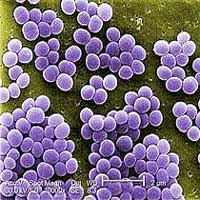
A team of physicists has shown why hospital germs adhere strongly to surfaces from which water simply rolls off, but bind so poorly to surfaces that are easily wetted by water. These results from studies in both experimental and theoretical physics may help to improve antibacterial surfaces.
